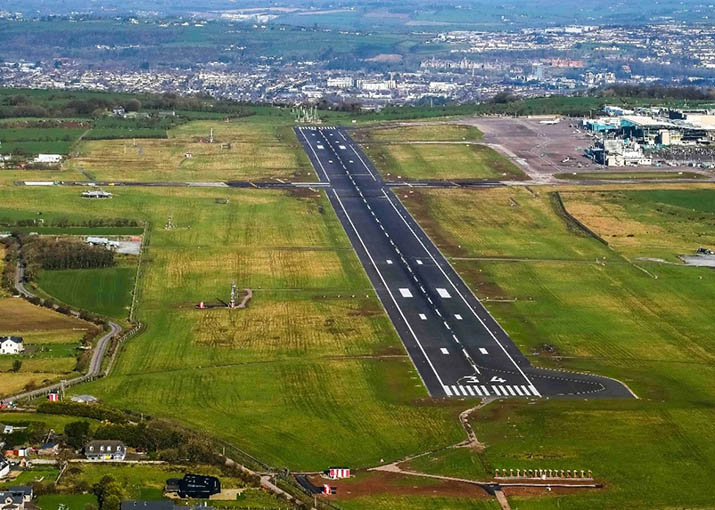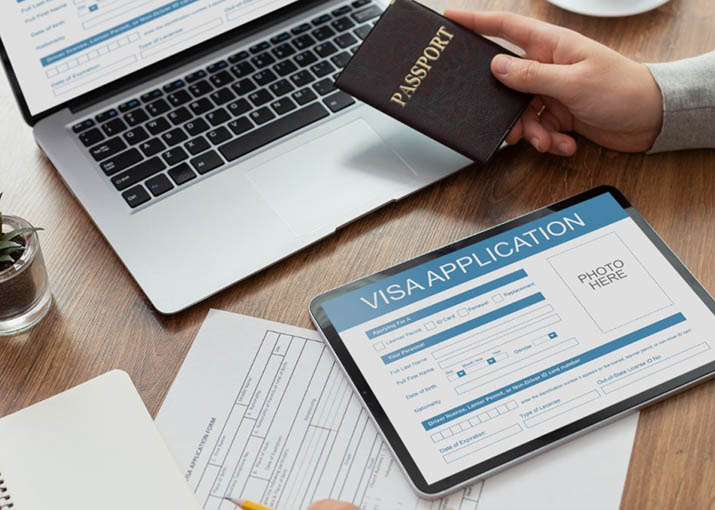Ireland, a land rich in history and natural beauty, is a dream destination for many travelers. From the mysterious castles and enchanting countryside to the ancient legends of fairies and gods, Ireland has a unique allure that captivates anyone who visits. Over the years, I’ve visited this incredible island multiple times, each time discovering new experiences and gaining valuable insights. Today, I’m excited to share the five most important tips I’ve learned along the way to help you plan a flawless trip to Ireland.
In this guide, I’ll walk you through everything you need to know before your Irish adventure. From preparing your passport and visa to what gear you’ll need, and how to choose the best flights and transportation, I’ve got you covered. This article will ensure that you’re well-prepared for your trip to Ireland, making your experience as smooth and enjoyable as possible.
1. Passport and Visa Requirements Before Traveling to Ireland
The first step in ensuring a successful international trip is handling your passport and visa requirements. Before heading to Ireland, you must make sure these critical documents are in order.
1.1 Passport Requirements
Ireland, while a member of the European Union, is not part of the Schengen Area, which means the passport and entry requirements are slightly different from those of other EU countries. According to Irish immigration laws, your passport must be valid for at least six months beyond the date of entry. So, double-check your passport’s expiration date before booking your flight.
While Ireland is part of the EU, it is important to note that non-EU citizens (such as those from the US, Canada, or Australia) will need to provide a valid passport for entry. If you’re traveling from a non-EU country, make sure that your passport is in good condition and complies with the entry requirements.
1.2 Visa Requirements
For tourists from non-EU countries (such as the US, Canada, and Australia), a visa is required to enter Ireland unless your country has a visa-exempt arrangement. For most people, the most common visa type is the Tourist Visa, which is for short-term visits. When applying for a visa, you’ll need to provide your passport, travel plans, accommodation details, proof of sufficient funds for your stay, and sometimes even a return ticket.
For U.S. citizens, Ireland has a special visa-waiver agreement, so you can enter without a visa for up to 90 days. However, it’s still essential to check the specific visa policies for your country of origin, as they can vary. Make sure to apply well in advance, as visa processing can take some time.
2. Essential Travel Gear for Your Ireland Trip
Ireland’s weather can be unpredictable, especially in March, which is when I traveled there. Expect anything from sunny skies to heavy rain within a single day. This makes packing the right gear essential for an enjoyable trip. Here are the travel essentials I recommend for your time in Ireland.
2.1 Clothing Essentials
Due to Ireland’s highly variable weather, layering is key when it comes to packing. Here’s a breakdown of what I suggest bringing for your trip:
- Waterproof Outerwear: Ireland is known for its frequent rain, so packing a high-quality waterproof jacket is a must. Choose a breathable one that will keep you dry while still being comfortable in the chilly wind.
- Comfortable Walking Shoes: Whether you’re exploring the bustling streets of Dublin or hiking through the Irish countryside, comfortable and waterproof walking shoes are essential. Ireland’s terrain, especially in rural areas, can be uneven, so make sure to bring shoes that can handle diverse conditions.
- Warm Clothing: While March in Ireland isn’t too cold, it can still get chilly, especially in the evenings or on windy days. A few warm layers such as sweaters, scarves, and thermal wear will keep you comfortable.
- Rain Gear: Ireland’s weather can change quickly, so in addition to your waterproof jacket, I recommend bringing a compact umbrella or a poncho for unexpected showers.
2.2 Accessories and Power Adapters
- Power Adapters: Ireland uses the UK-style electrical plug with three rectangular prongs (Type G). The standard voltage is 230V, and the frequency is 50Hz. If your devices have a different plug type or voltage, make sure to bring a universal adapter and a voltage converter to ensure that you can charge your electronics without any problems.
- Backpack and Luggage: For exploring cities and countryside alike, a lightweight daypack will be invaluable. It should be big enough to carry your essentials while being compact enough for easy mobility. A durable suitcase is also recommended for longer stays or if you’re moving between cities.
3. Flight and Transportation Tips

Getting to Ireland and traveling within the country can be smooth and hassle-free if you plan your flights and transportation properly. Here’s my guide to the best ways to fly to Ireland and get around once you’re there.
3.1 Choosing the Right Flights
- International Flights: The most common entry point into Ireland is Dublin Airport (DUB), the busiest airport in the country. Other airports, like Cork Airport (ORK) and Shannon Airport (SNN), also serve as entry points. Flights from the U.S. and Europe are frequent, and I recommend booking early to secure the best rates. For example, a direct flight from New York to Dublin takes about 7 hours, while flights from Los Angeles take about 11 hours.
- Flight Duration: If you’re traveling from North America or Europe, opt for direct flights whenever possible to save time. From the U.S., flights are generally around 7-11 hours, depending on your departure city. If you’re coming from other parts of the world, you may need to transit through major European hubs like London, Paris, or Amsterdam.
3.2 Domestic Travel in Ireland
- Public Transportation: Ireland’s cities are well-connected by buses and trains. In Dublin, the public transportation system includes buses, trams (called Luas), and trains (DART). You can get a Leap Card for easy travel on all public transport in Dublin. For intercity travel, Ireland has a network of trains that connect the major cities, such as Dublin to Cork, Limerick, or Galway.
- Rental Cars: If you want to explore Ireland’s rural beauty or take a scenic drive along the Wild Atlantic Way, renting a car is a great option. Irish roads are generally in good condition, but be aware that Ireland follows left-hand driving, which might take some getting used to. Make sure you have an international driving permit if required by your country.
- Taxis and Ride-Sharing: In cities like Dublin, taxis are plentiful. Alternatively, ride-sharing services like Uber and Bolt are available in major cities and are a convenient way to travel around without the hassle of hailing a cab.
4. Things to Keep in Mind During Your Trip to Ireland
In addition to weather and transportation, there are a few other important tips I want to share based on my experiences in Ireland. These small yet essential details will help you avoid common pitfalls and have a more enjoyable experience.

4.1 Be Prepared for Changing Weather
Ireland’s weather is famously unpredictable, and March can offer both sunshine and rain within the same day. Layer your clothing so you can adjust to the varying temperatures. Always carry an umbrella and be ready for quick weather changes.
4.2 Plan Ahead for Popular Attractions
Ireland is home to many world-renowned attractions like the Cliffs of Moher, the Giant’s Causeway, and Blarney Castle. These places can get crowded, so I recommend booking your tickets in advance whenever possible. This will save you time and guarantee access to some of the country’s most iconic sites.
4.3 Stay Safe and Healthy
Ireland is generally a safe destination for travelers, but it’s always wise to take basic precautions. Avoid walking alone in poorly lit areas late at night and always keep an eye on your belongings. If you’re hiking in rural areas, let someone know your plans in case of emergencies.
Ireland is a fantastic destination, offering a rich blend of history, culture, and natural beauty. Whether you’re exploring the vibrant streets of Dublin or hiking through the lush green countryside, you’ll be sure to have a memorable experience. By taking the time to prepare your passport and visa, packing the right gear, booking your flights, and knowing how to get around the country, you’ll set yourself up for a smooth and stress-free journey.
March is a wonderful time to visit Ireland, as the weather is mild and the crowds are thinner than in the summer months. By planning ahead and taking these key tips to heart, you’ll be able to make the most of your time in this beautiful country. I hope these insights help you have a truly unforgettable trip to Ireland!


